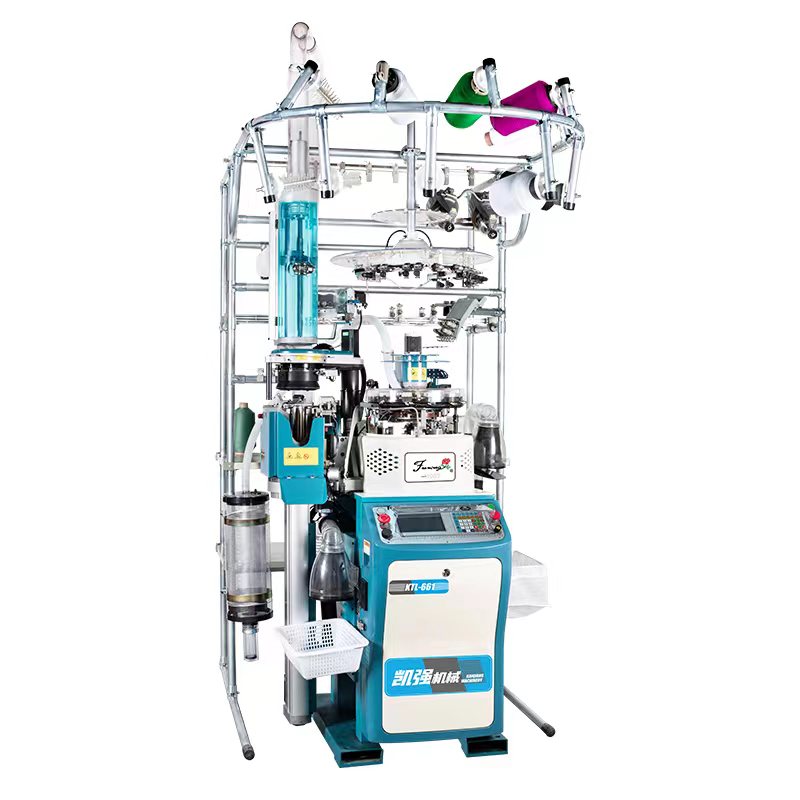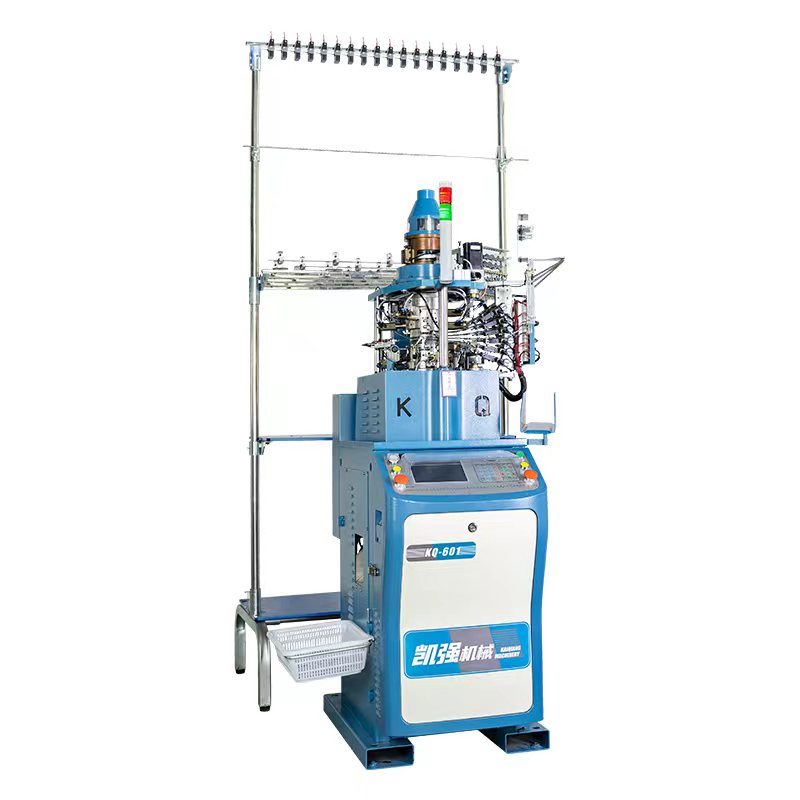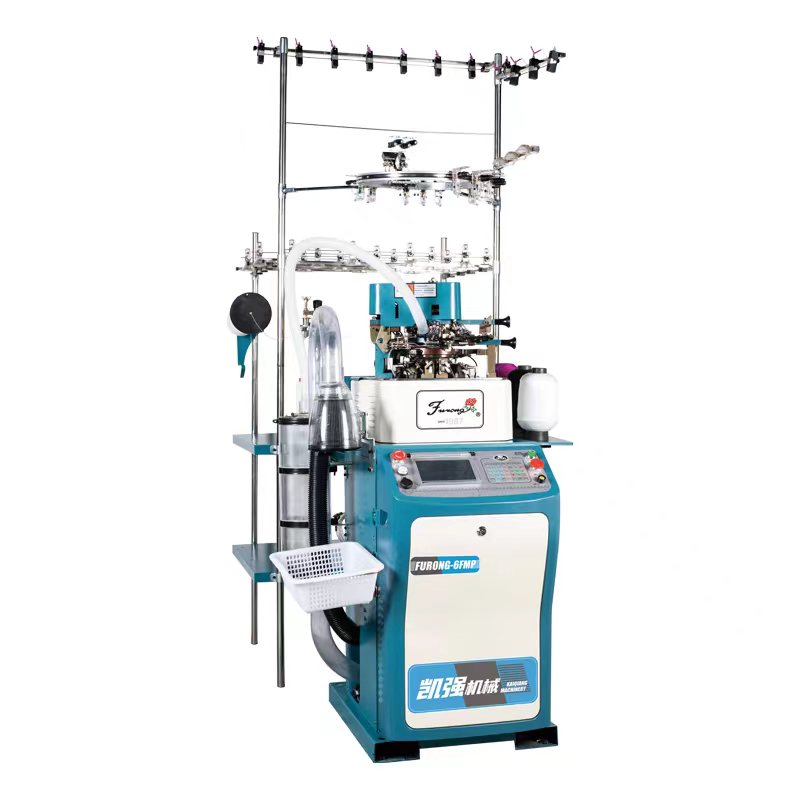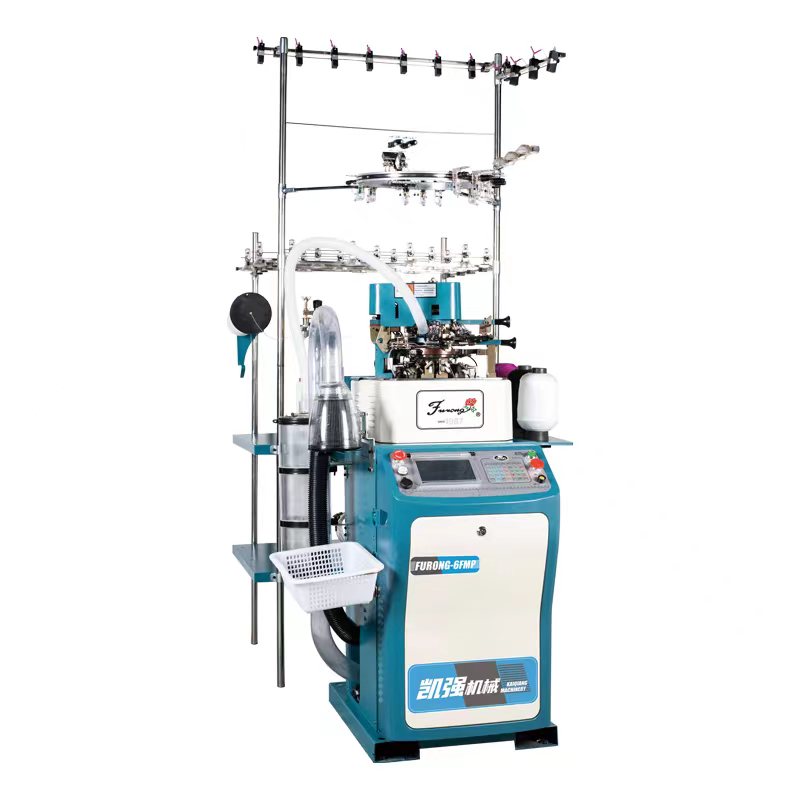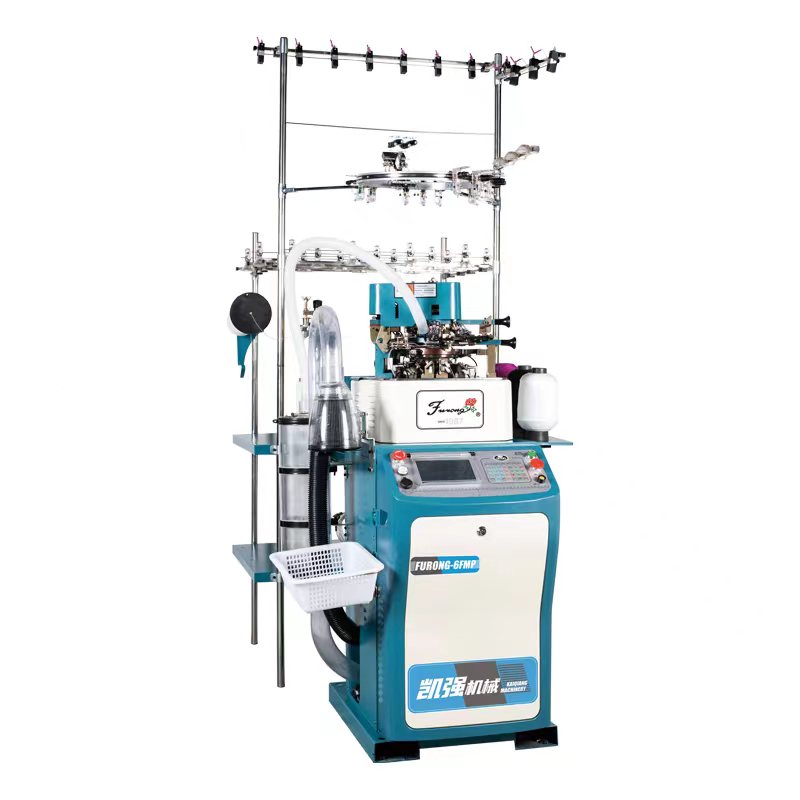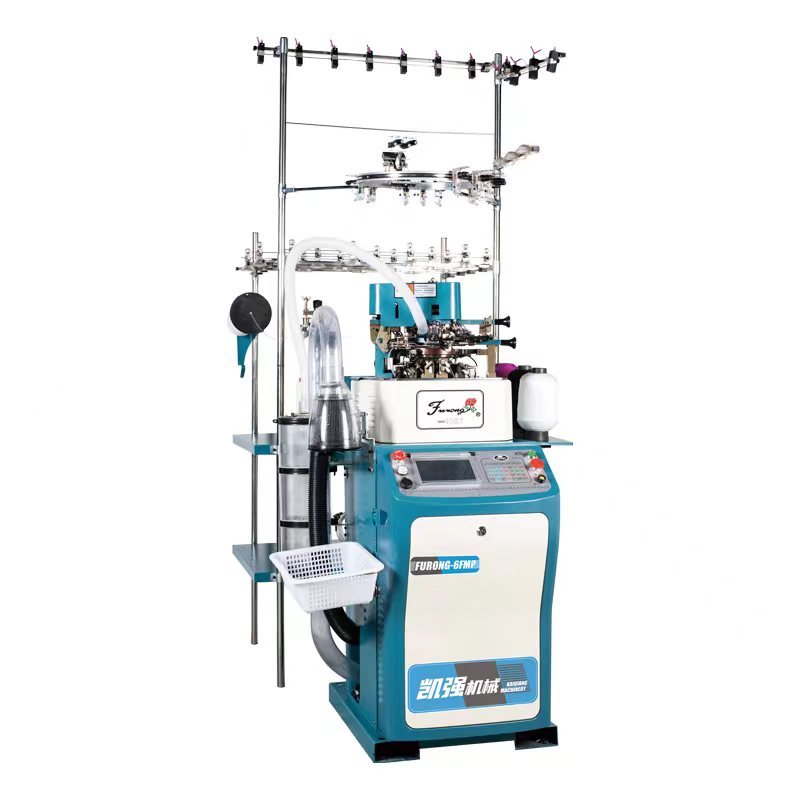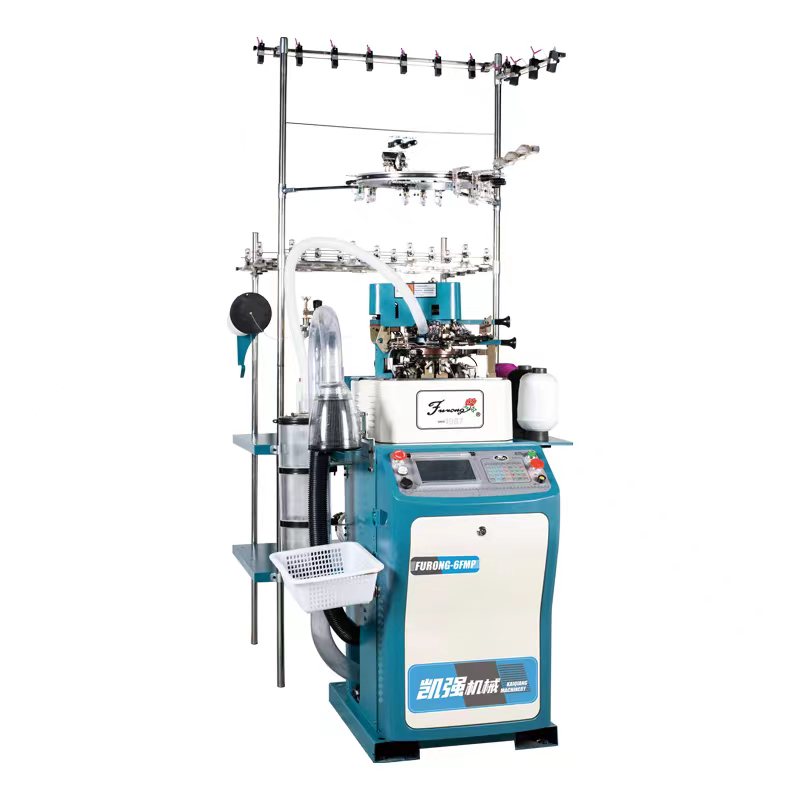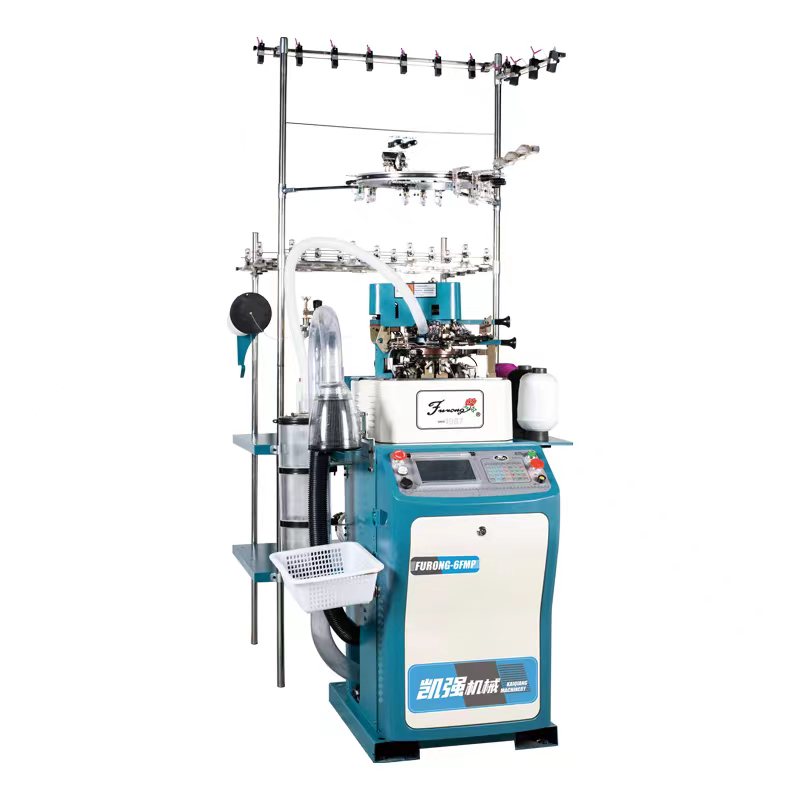Sock manufacturing using automatic socks knitting machines is a highly efficient and precise process. These machines are designed to produce a wide range of sock types, from everyday socks to specialized sports and medical socks. Here's an overview of the sock manufacturing process with automatic knitting machines:
1. Yarn Selection and Feeding:
The manufacturing process begins with the selection of suitable yarns. Yarns can vary in material composition, color, and thickness, depending on the desired sock characteristics. Multiple yarn feeders are set up on the knitting machine to accommodate different yarns and colors for various parts of the sock.
2. Machine Setup:
The knitting machine is set up with the appropriate parameters for the desired sock design. This includes the choice of ribbing pattern (e.g., 1x1, 2x2), sock size, and other specifications. Modern knitting machines are equipped with computerized control systems that allow operators to program these parameters.
3. Casting On:
The process begins with "casting on," where the yarn is threaded onto the knitting machine's needles. The machine's needles are arranged in a circular or flat configuration, depending on the machine type.
4. Knitting Process:
The knitting machine starts its operation, following the programmed pattern and instructions. The needles are raised and lowered, creating loops and stitches as the yarn is fed into the machine. The ribbing and elastic features are introduced at this stage, depending on the design.
5. Heel and Toe Shaping:
For sock manufacturing, special attention is given to shaping the heel and toe areas. The knitting machine may have dedicated needles and mechanisms to create these sections with precision, ensuring a comfortable fit.
6. Gusset Formation (Optional):
In some sock designs, a gusset is formed to add extra room and comfort in the arch and instep area. Gussets are particularly common in sports and athletic socks.
7. Cuff, Leg, and Ankle Sections:
The knitting machine continues to work on the cuff, leg, and ankle sections of the sock, following the programmed design. Ribbing and elastic elements are crucial in these areas to provide a secure fit.
8. Toe Closing (Linking):
After the entire sock body is knitted, the knitting machine may incorporate an automatic toe-closing mechanism. This feature eliminates the need for manual stitching and creates a seamless toe for added comfort.
9. Quality Control and Inspection:
Socks are subject to quality control checks during and after production. Operators may inspect the socks for defects, correct sizing, and overall quality.
10. Packaging and Labeling:
- Once the socks are manufactured and inspected, they are ready for packaging. They are often paired and packaged in sets, and labels with size and care instructions are added.
11. Distribution:
- Finished socks are distributed to wholesalers, retailers, or directly to consumers. They may be packaged in bulk or individual pairs, depending on the distribution channel.
Throughout the sock manufacturing process, automatic knitting machines play a pivotal role in achieving efficiency, consistency, and high-quality results. The ability to customize designs, sizes, and materials allows manufacturers to meet a wide range of consumer preferences and market demands.

 英语
英语 中文简体
中文简体